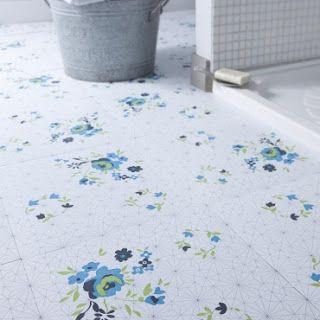How To Prepare Your Floor For New Vinyl
27 January 2014

Picking new flooring can seem like a challenge because there is just so much choice. From wooden to carpets, vinyl to tiles, marble and more, you can find flooring to suit any taste and every budget. And if your taste and your budget don’t quite sit together, you can always opt for cheap vinyl flooring which will look like a more expensive material such as wood.
Once you’ve overcome that first hurdle, and found the perfect flooring choice for you, you’ll need to give some thought to fitting.
The first thing to consider is the state of any existing flooring, and the type of floor cover you’re going to be replacing it with. If you’re replacing old vinyl flooring with new, you might need to remove the existing covering in some cases, while in others you might just need to fill gaps or cover it with plywood or concrete. It can be difficult to remove cheap vinyl flooring, and the glue used can make it even more difficult.
Covering the Existing Vinyl
This is by far the easiest option. Any lumps or bumps can show through cheap vinyl flooring (and even the more expensive brands), so it’s important that when you fit it, you’re fitting it over a completely flat surface. You might find even after all the fuss and hassle of removing old vinyl flooring and adhesive that you’ll have to fit ¼” plywood in order to make the surface suitable. If you didn’t lay the existing flooring, it could be hiding all sorts of problems.
Obviously adding a layer of concrete or plywood will change the floor level of the room. You will need to consider whether this will affect opening and closing of doors and cupboards, for example. You could be adding around half an inch to the floor level by the time you’ve fitted new under flooring and the vinyl.
After the subfloor has been fitted, make sure it is incredible clean before you fit your vinyl. Sweep away any sawdust, grit, or loose nails as these will all show through your new flooring.
Removing the Existing Vinyl
Bear in mind that older vinyl floor used to be made using asbestos. While in itself this isn’t dangerous, disturbing the fibres is. If your vinyl flooring has a backing which contains asbestos fibres, you can hire a certified asbestos abatement contractor to remove it for you.
Assuming your vinyl is safe to remove, you can begin to pull it up. If the subfloor is either concrete or plywood, you can simply cut the flooring in to strips using a utility knife, and then use a chisel to pull each strip up. You can also use a heat gun which will help soften the vinyl.
Before you get started, pull up a corner of the vinyl in a corner. There is a possibility that underneath the vinyl is hardwood floors, which can easily be damaged in removing the vinyl, but once the glue has been removed, can look amazing in their own right. If you are lucky enough to find hardwood underneath, you might want to be much more careful when removing the old cheap vinyl flooring.
Getting Rid of the Adhesive

The adhesive used holds well because it basically becomes rock solid – so as you might imagine it doesn’t come away as easily as you might like. But it’s important to apply the new vinyl to a completely flat surface, and therefore it will need to be removed before you begin your installation.
A lot of older adhesives contain oil which can discolour your new flooring, soaking through and becoming visible. There are lots of adhesive removers available which will soak through the glue, and return it to a liquid state. You’ll then need to scrape this off before it dries and hardens again. Some of the best removers contain citric acid. They tend to be low odour, and are nontoxic.
Even when you think you’ve got rid of all the glue, give your floor a careful inspection. Any small bit of glue or debris could warp or stain your new floor.
More news from Remland Carpets